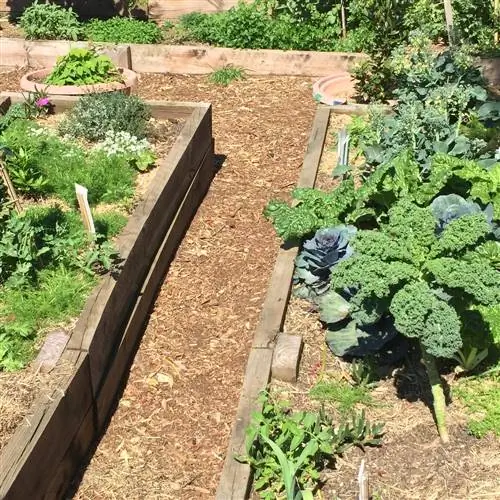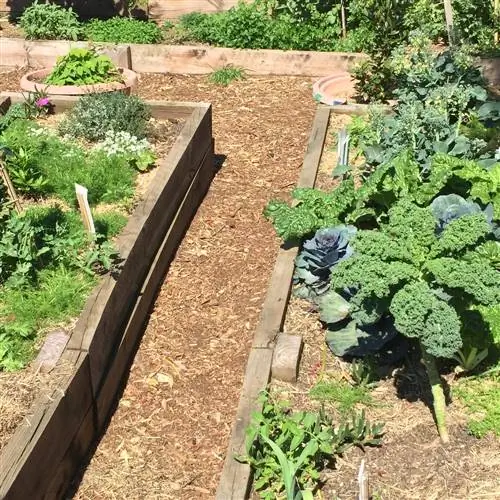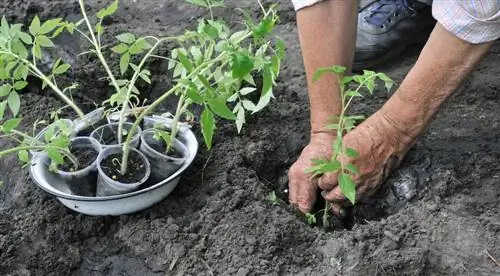- Author admin [email protected].
- Public 2023-12-16 16:46.
- Last modified 2025-01-23 11:21.
In the traditional vegetable garden, a wide, well-paved main path runs in the middle between the rows of beds. This connects the kitchen garden with the other parts of the garden as well as the house and/or the garden shed. Narrow side or maintenance paths run between the beds and are intended to make garden maintenance possible or easier. So that you can optimally supply each vegetable patch, the paths must also be planned correctly.

How do you optimally plan paths in the vegetable garden?
When planning vegetable garden paths, main paths should be 90-120 cm wide and side paths 30-40 cm wide. Main paths can be paved with slabs, paving stones or gravel, while side paths can simply be paved or covered with bark mulch.
Plan routes optimally
Standard vegetable beds are usually around 100 to 120 centimeters wide, 150 to 200 centimeters long and rectangular. These dimensions ensure that the gardener can easily reach every spot in the bed. Bed care is carried out from a narrow care path that only needs to be between 30 and 40 centimeters wide. Most of the time, the path is as wide as the gardener's two feet next to each other, as the gardener simply tramples the path as needed in the spring. The main path, on the other hand, should be at least 90 to 120 centimeters wide to provide enough freedom of movement for a wheelbarrow or hand truck as well as space to place harvest baskets or fertilizer sacks.
Create main and secondary routes correctly
In addition to the main path and the maintenance paths between the beds, it is also recommended to create connecting corridors that, for example, provide access to the compost heap, tool shed or greenhouse. These paths only need to be between 60 and 80 centimeters wide.
Fix main routes
Main paths are best paved with slabs, paving stones or gravel or gravel. These path surfaces should also be laid with a 20 to 30 centimeter thick substructure (as a drainage and leveling layer) made of gravel or coarse gravel. Tamp the substructure as firmly as possible so that the surface cannot slip. In the case of slabs or paving, there is an approximately five centimeter thick laying layer of sand or fine chippings; The ground must therefore be dug to a corresponding depth. On gravel and gravel paths, a root protection fleece over the substructure can prevent weeds from growing. The surfaces should be laid with a slight slope on both sides so that no puddles remain on the paths later.
Side paths and maintenance paths
For the side paths between the beds, a width of 30 to 40 centimeters is sufficient. They simply trample these paths or cover them with bark mulch, which, however, has to be renewed more frequently. Narrow step gratings (€30.00 on Amazon) made of wood, plastic or metal have proven particularly useful. A gravel or gravel cover like the main paths requires a little more effort.
Tip
Beds with unpaved paths in particular benefit from a low bed border. This ensures that the fertile soil remains within the bed areas and weeds are less likely to penetrate.






